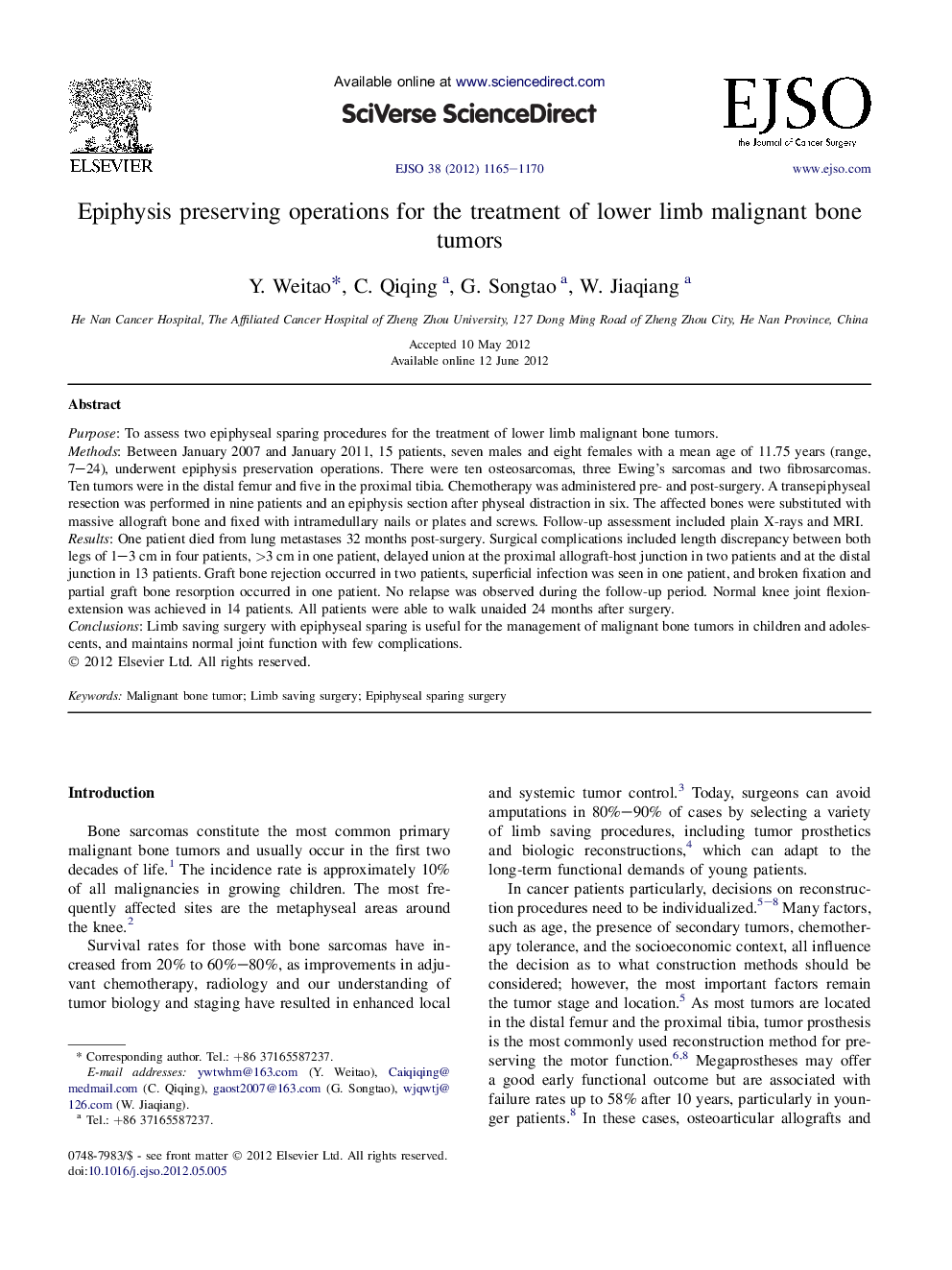| Article ID | Journal | Published Year | Pages | File Type |
|---|---|---|---|---|
| 3986484 | European Journal of Surgical Oncology (EJSO) | 2012 | 6 Pages |
PurposeTo assess two epiphyseal sparing procedures for the treatment of lower limb malignant bone tumors.MethodsBetween January 2007 and January 2011, 15 patients, seven males and eight females with a mean age of 11.75 years (range, 7–24), underwent epiphysis preservation operations. There were ten osteosarcomas, three Ewing's sarcomas and two fibrosarcomas. Ten tumors were in the distal femur and five in the proximal tibia. Chemotherapy was administered pre- and post-surgery. A transepiphyseal resection was performed in nine patients and an epiphysis section after physeal distraction in six. The affected bones were substituted with massive allograft bone and fixed with intramedullary nails or plates and screws. Follow-up assessment included plain X-rays and MRI.ResultsOne patient died from lung metastases 32 months post-surgery. Surgical complications included length discrepancy between both legs of 1–3 cm in four patients, >3 cm in one patient, delayed union at the proximal allograft-host junction in two patients and at the distal junction in 13 patients. Graft bone rejection occurred in two patients, superficial infection was seen in one patient, and broken fixation and partial graft bone resorption occurred in one patient. No relapse was observed during the follow-up period. Normal knee joint flexion-extension was achieved in 14 patients. All patients were able to walk unaided 24 months after surgery.ConclusionsLimb saving surgery with epiphyseal sparing is useful for the management of malignant bone tumors in children and adolescents, and maintains normal joint function with few complications.
